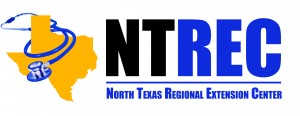Physician Data Analytics – The Stages of Data Progression
Last month, I discussed how mobile patient monitoring could fit into your physician data analytics program. So, if you were to do this, what are the typical stages in this process?

If you have been participating in the Centers for Medicare & Medicaid Services (CMS) Meaningful Use (MU) incentive program, the overall focus has been to use an electronic health record (EHR) in a “meaningful way.” CMS has also defined three basic stages of MU as Stage 1 = data capture; Stage 2 = data sharing; and Stage 3 = data analytics. Obviously, whether you are talking about data from mobile devices, a patient’s personal health record or data generated and captured within your office, the stages are basically the same.
• Data Capture — In many situations, the basic step of data capture is not as simple as this may imply. The various criteria for capturing all the data elements to meet MU Stage 1 will require every person in your practice to modify their workflow procedures to ensure data elements are being captured within the actual process of seeing patients. After a while, the new workflow process will become “normal” and capturing data elements will become second nature to your staff. The capturing of data from mobile devices will require additional changes in workflow, but depending upon your practice and specialty, can add valuable data to the clinical evaluation of patients.
• Data Sharing — The next major step is to “share” the basic demographic and clinical information with other physicians and hospitals. This is where you may want to consider using a local Health Information Exchange (HIE) for transporting patient data in a safe, secure and encrypted manner. The sharing of data also means to have data elements come from another practice group into your EHR. This will also require support from your EHR vendor and the HIE.
• Data Analytics — The final stage is to use data analytics to not only meet the MU requirements, but to produce “actionable” information to improve quality and lower the costs of patient care. There is no sense in doing any type of physician data analytics unless you are going to “use” the information to improve the process of care. By sharing data across different inpatient and outpatient settings, the ability to aggregate data at a community level and then take “action” at a community level will become reality.
By following the progression from data capture, data sharing to data analysis, you have moved into the area of population health. You can then focus on the overall health of your patients from not only your own practice perspective, but from a comparative, community health perspective. This truly is the best of both worlds — better individual patient care that improves the overall health of the community population!

